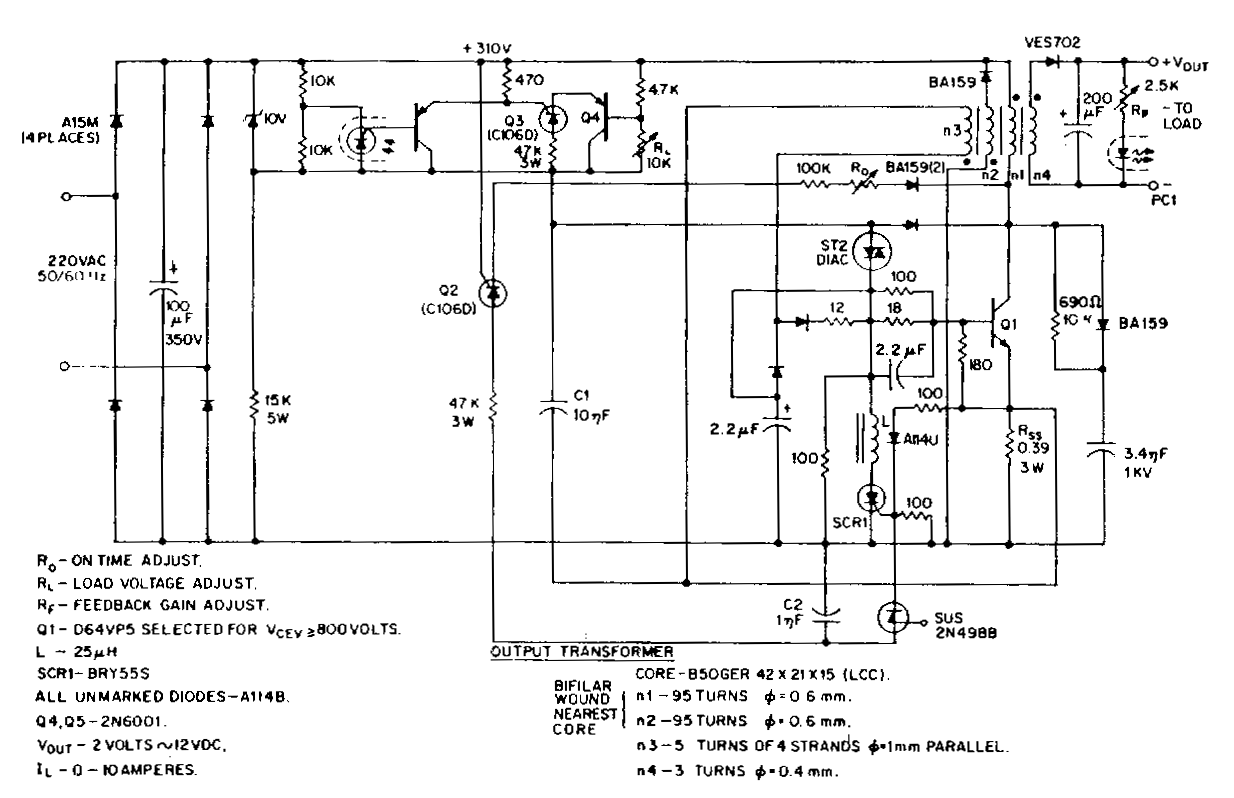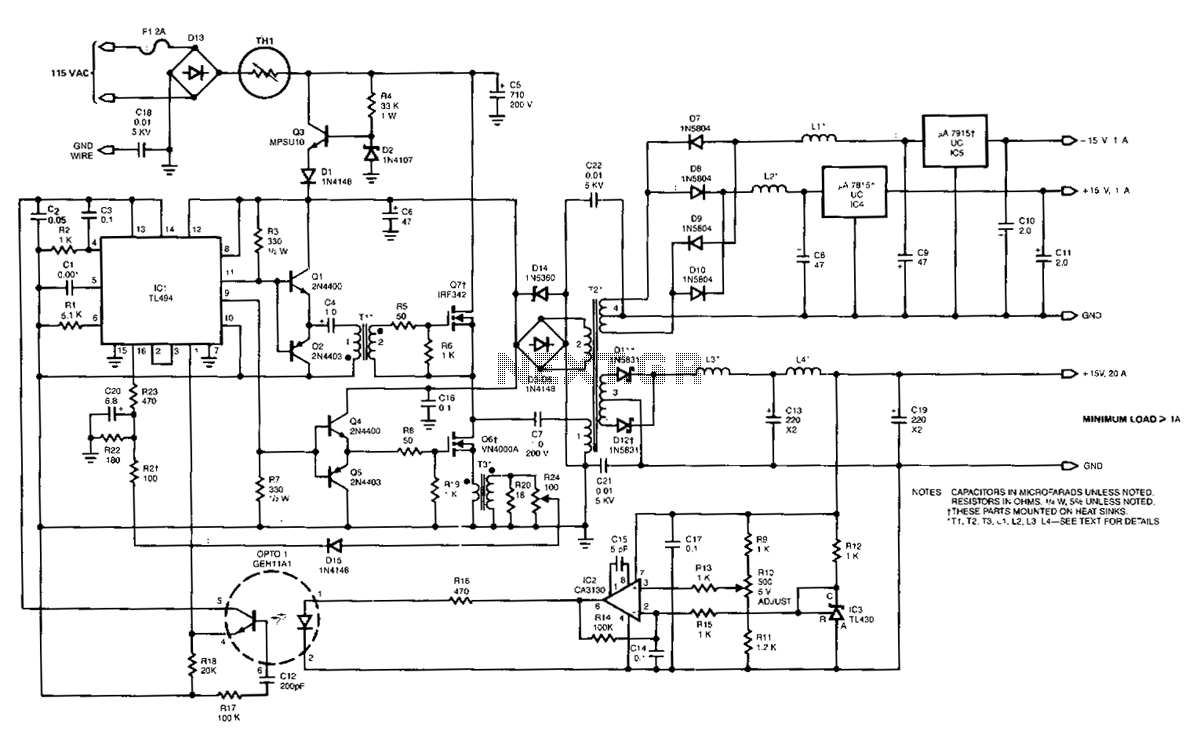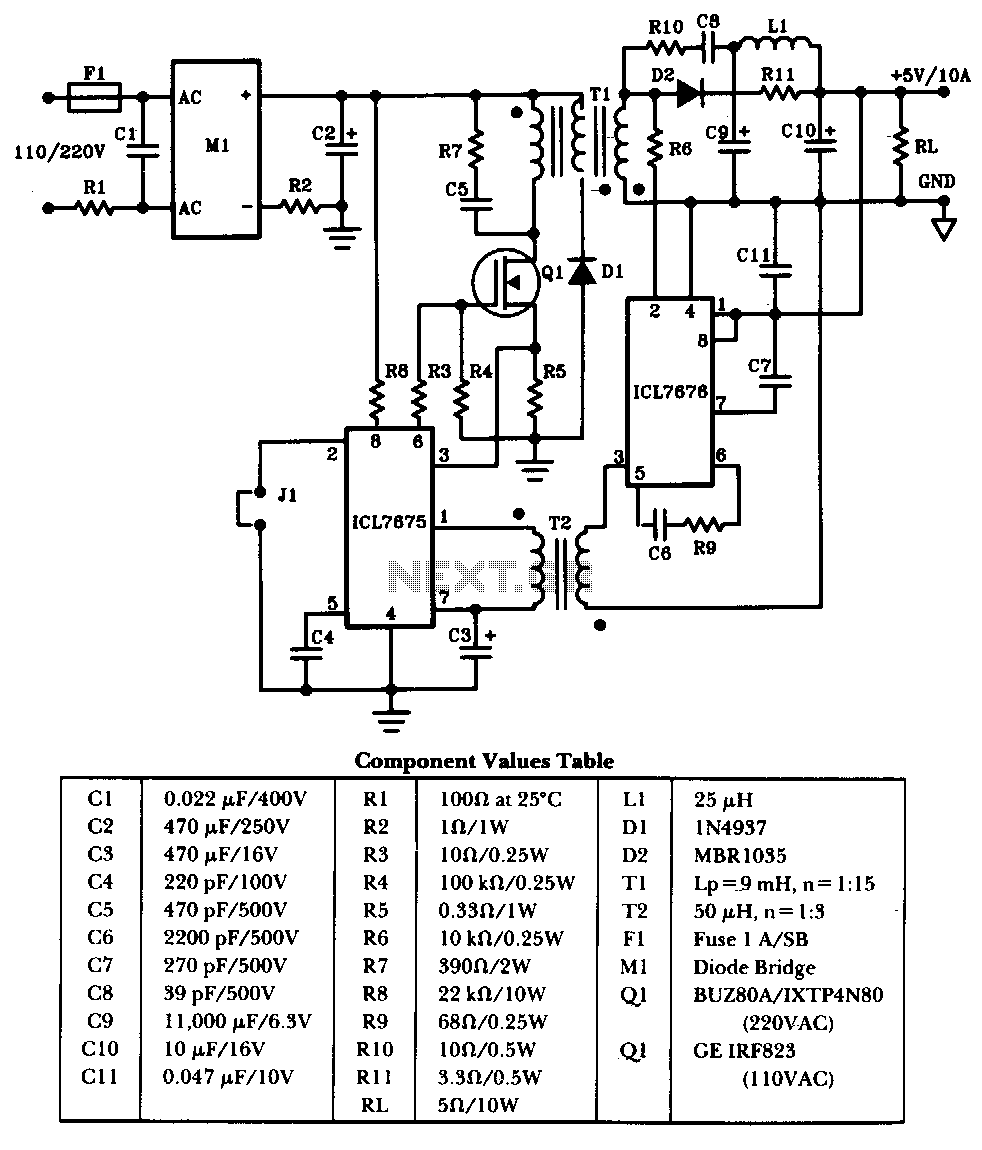
Switching-power-supply

This low-voltage, high-current output switching power supply operates from a 220 VAC input. In this circuit, an ST2 diac relaxation oscillator, along with Q3, C1, and the diac, initiates the conduction of the output switching transistor Q1. The on-time of Q1 is maintained constant by a separate timing/continuation network consisting of Q2, C2, R1, and SCR1. Consequently, the output voltage is dependent on the duty cycle to compensate for unwanted variations in output voltage due to input fluctuations.
This low-voltage, high-current output switching power supply is designed to efficiently convert a 220 VAC input into a stable low-voltage output. The core of the circuit is the ST2 diac relaxation oscillator, which generates a trigger signal that controls the conduction of the output switching transistor Q1. The oscillator operates by charging and discharging the capacitor C1, which, when reaching a certain threshold voltage, activates the diac. This action turns on Q1, allowing current to flow to the load.
The timing/continuation network, which includes Q2, C2, R1, and SCR1, is crucial for maintaining the on-time of Q1. This network ensures that the switching transistor remains on for a predetermined duration, effectively controlling the output voltage. The values of the components in this network can be adjusted to set the desired duty cycle, which directly influences the average output voltage delivered to the load.
Moreover, the output voltage is designed to compensate for variations that may occur due to fluctuations in the input voltage. This is particularly important in applications where a stable output is critical. The feedback mechanism can be incorporated to monitor the output voltage and adjust the duty cycle dynamically, ensuring that the output remains within specified limits despite changes in the input conditions.
Overall, this power supply design is characterized by its efficiency and reliability, making it suitable for various applications that require a stable low-voltage output from a high-voltage AC source.This low-voltage high-current output, sWitching de power supply is running off the 220-Vac input. In this circuit, an ST2 diac relaxation oscillator, Q3, Cl, and the diac, initiates conduction of the output switching transistor Ql, the on-time of which is maintained constant by a separate tirning/conunutation network consisting of Q2, C2, SUS, and SCR 1. The output voltage, consequently, is dependent on the duty cycle. To compensate for unwanted variations of output voltage because of input. 🔗 External reference
This low-voltage, high-current output switching power supply is designed to efficiently convert a 220 VAC input into a stable low-voltage output. The core of the circuit is the ST2 diac relaxation oscillator, which generates a trigger signal that controls the conduction of the output switching transistor Q1. The oscillator operates by charging and discharging the capacitor C1, which, when reaching a certain threshold voltage, activates the diac. This action turns on Q1, allowing current to flow to the load.
The timing/continuation network, which includes Q2, C2, R1, and SCR1, is crucial for maintaining the on-time of Q1. This network ensures that the switching transistor remains on for a predetermined duration, effectively controlling the output voltage. The values of the components in this network can be adjusted to set the desired duty cycle, which directly influences the average output voltage delivered to the load.
Moreover, the output voltage is designed to compensate for variations that may occur due to fluctuations in the input voltage. This is particularly important in applications where a stable output is critical. The feedback mechanism can be incorporated to monitor the output voltage and adjust the duty cycle dynamically, ensuring that the output remains within specified limits despite changes in the input conditions.
Overall, this power supply design is characterized by its efficiency and reliability, making it suitable for various applications that require a stable low-voltage output from a high-voltage AC source.This low-voltage high-current output, sWitching de power supply is running off the 220-Vac input. In this circuit, an ST2 diac relaxation oscillator, Q3, Cl, and the diac, initiates conduction of the output switching transistor Ql, the on-time of which is maintained constant by a separate tirning/conunutation network consisting of Q2, C2, SUS, and SCR 1. The output voltage, consequently, is dependent on the duty cycle. To compensate for unwanted variations of output voltage because of input. 🔗 External reference


